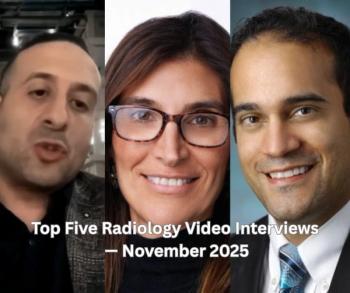
Radiology’s New Normal: Less Money, But New Opportunity
CHICAGO - The future for radiologists is uncertain, but becoming leaders will help save the profession.
CHICAGO - Do you feel like a marked man? Are you flinching at noises, skirting around shadows, waiting for that bullet with your name on it?
You’re not being paranoid. They really are out to get you - or at least your reimbursements, you cushy schedule and your professional esteem. That was the sobering message Sunday from the RSNA 2012 session “Saving Our Profession: How Radiologists Can Thrive in the Era of Health Care Reform.”
Radiologists themselves are part of the problem, according to Lawrence R. Muroff, MD, CEO and president of Imaging Consultants Inc. in Tampa, Fla., who spoke at the session. “When radiologists are asked to look to the future, they look to the past,” he said.
It’s understandable. The past has been good to radiologists. “The fact is that for the period 2000 to 2006, imaging costs rose faster than anything else in the Medicare system,” said Bruce J. Hillman, MD, who also spoke.
And that good fortune makes radiologists are target, because medical payments are a zero-sum game. “If somebody gets more, it means somebody else gets less,” Muroff said. To put it bluntly, he said, “We are prime targets because we make so damn much money and because we have such great quality of life.”
Those days, he warned, are over.
This doesn’t mean that radiology itself will be any less vital. On the contrary, imaging studies are becoming more and more integral to the practice of medicine. But Muroff said there’s a difference between the technology and the specialist: “I believe that the future for radiology is bright. The future for radiologists is far less certain.”
So how do you counteract this? Norman Joseph Beauchamp, MD, of the University of Washington, said a certain amount of schmoozing is in your future. “If you position yourself as leaders in the organization, when the tough decisions are being made, they’re not going to see you as them, but as a part of we,” he said. “We found this to be a critical part of this strategy.”
That means volunteering for leadership positions within your hospital, in your accountable care organization, with your partners, and throughout your professional network. It means coming out of the office and developing lines of communication with clinicians and patients. It means showing that you add value to the organization.
And it means supporting innovation throughout the industry. Hillman urged radiologists to donate 1 percent of their income to programs that develop radiology research.
But this can’t be technological innovation without limits. “Innovations have to fall in line with policy needs of the country and the direction of medicine and health care in general,” Hillman said. “They have to produce the same or better care at lower cost. It’s not just that they improve the accuracy of what we do, they need to verifiably improve health.”
None of the presenters want you to give up hope. They just want to you be realistic about what’s coming. Yes, things will change, but, according to Beauchamp, “I would say is it’s a good change and it’s a necessary change.”
Murroff agreed: “The bottom line is that some people will have major problems with their practices and their livelihood, but there’s never been greater opportunity out there. Turbulent times offer unprecedented opportunities.”
Newsletter
Stay at the forefront of radiology with the Diagnostic Imaging newsletter, delivering the latest news, clinical insights, and imaging advancements for today’s radiologists.


























